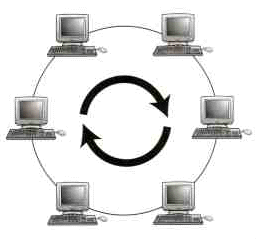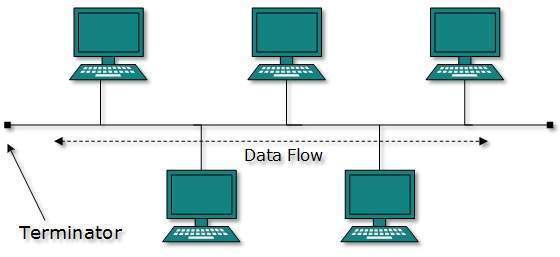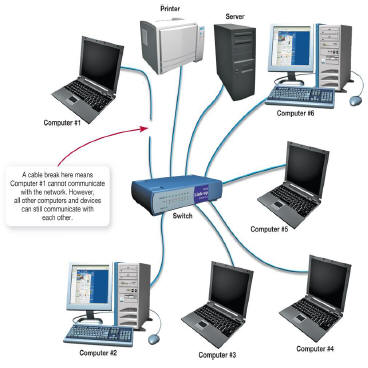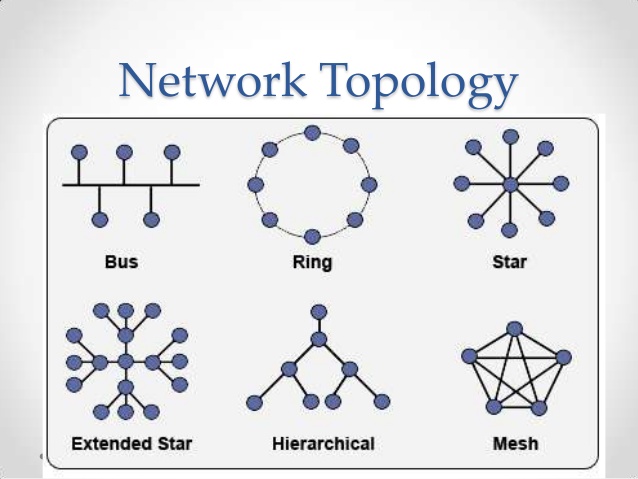- Layout of the computers and devices in a communications network
| PHYSICAL TOPOLOGY | LOGICAL TOPOLOGY |
| How they are actually interconnected with cables | How the signal travel along the physical path |
| TYPES | BUS NETWORK TOPOLOGY | RING NETWORK TOPOLOGY | STAR NETWORK TOPOLOGY |
| DIAGRAM |  |  |  |
| EXPLANATION (PHYSICAL) | Consist of a single central cable(backbone) , to which all computers and other devices connect Terminator : prevent the signal from bouncing back | A cable forms a closed loop with all computers and devices arranged along the ring | All the computers and devices on the network connect to a central device(hub/switch) |
| EXPLANATION (LOGICAL) | Data
transmitted in a series of signal and move in both direction which
every node will receive but only the intended receipent received and
the rest rejected | Data transmitted on a ring network travels from device to device around entire ring , in one direction using token . | All data transfers from one device to another passes through hub or switch  |
| ADVANTAGES | - inexpensive and easy to install -failure of one device does not affect the rest of bust network | -cable faults are easily located -share the network resources fairly | - if one device fails , only that device is affected -easy to troubleshoot and isolate problems |
| DISADVANTAGES | - a break in the cable will prevent all systems from accesing the network - difficult to identify the problem if entire network shut down | - a failure in any cable or device breaks the loop and can take down the entire network - difficult to install | - if the hub/switch fails , the entire network will be inoperation - more expensive because of the cost hub/switch |
 |